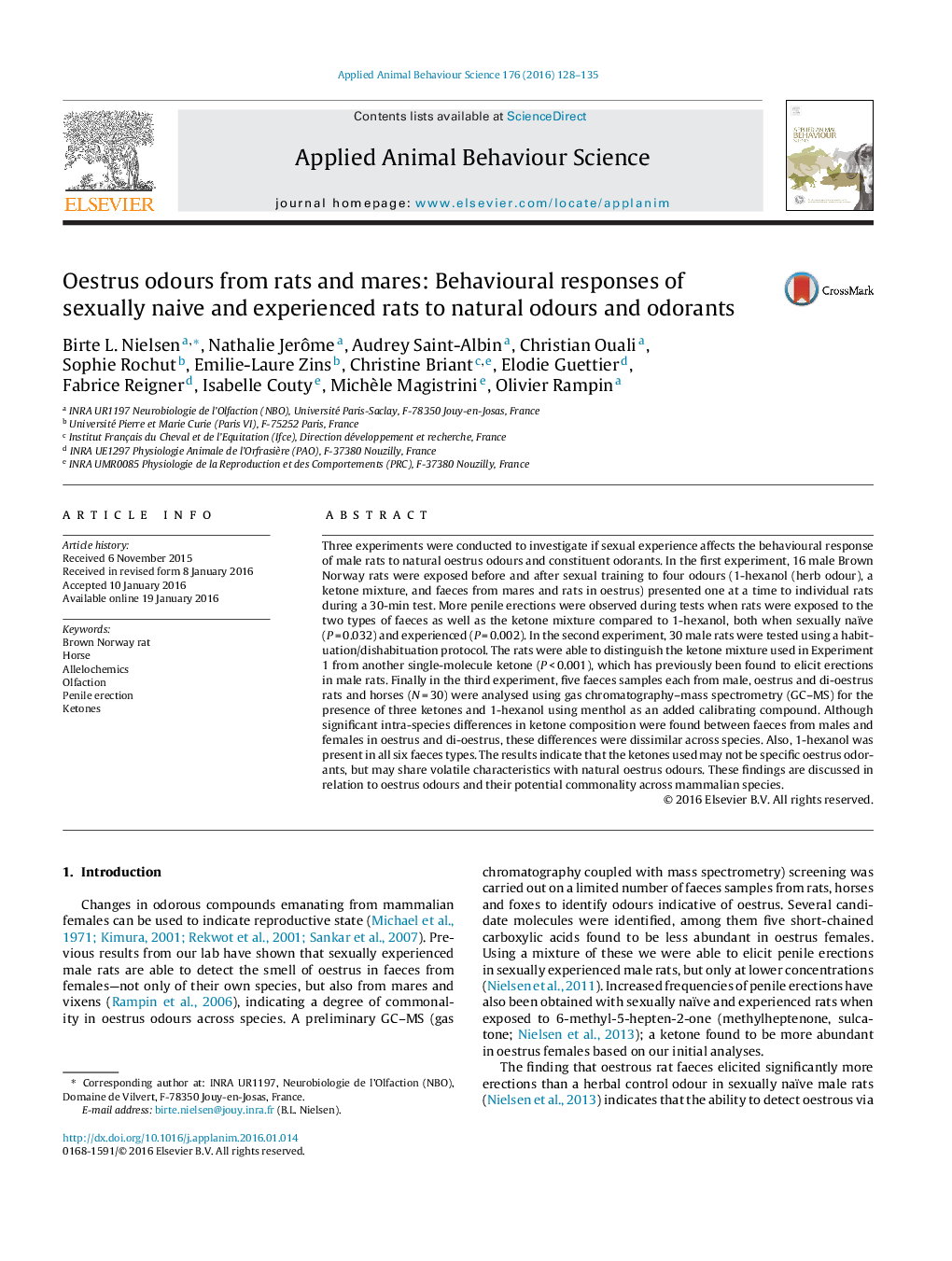| کد مقاله | کد نشریه | سال انتشار | مقاله انگلیسی | نسخه تمام متن |
|---|---|---|---|---|
| 4522413 | 1625330 | 2016 | 8 صفحه PDF | دانلود رایگان |

• Sexually naïve rats are able to detect the smell of oestrus in faeces from mares.
• A mix of 2 ketones elicits penile erections in sexually naïve and experienced rats.
• Oestrus faeces from rats and mares did not have unique amounts or ratios of ketones.
• The ketones used were not odorants specifically indicative of oestrus.
• As a molecular group, ketones play a significant role in oestrus odours.
Three experiments were conducted to investigate if sexual experience affects the behavioural response of male rats to natural oestrus odours and constituent odorants. In the first experiment, 16 male Brown Norway rats were exposed before and after sexual training to four odours (1-hexanol (herb odour), a ketone mixture, and faeces from mares and rats in oestrus) presented one at a time to individual rats during a 30-min test. More penile erections were observed during tests when rats were exposed to the two types of faeces as well as the ketone mixture compared to 1-hexanol, both when sexually naïve (P = 0.032) and experienced (P = 0.002). In the second experiment, 30 male rats were tested using a habituation/dishabituation protocol. The rats were able to distinguish the ketone mixture used in Experiment 1 from another single-molecule ketone (P < 0.001), which has previously been found to elicit erections in male rats. Finally in the third experiment, five faeces samples each from male, oestrus and di-oestrus rats and horses (N = 30) were analysed using gas chromatography–mass spectrometry (GC–MS) for the presence of three ketones and 1-hexanol using menthol as an added calibrating compound. Although significant intra-species differences in ketone composition were found between faeces from males and females in oestrus and di-oestrus, these differences were dissimilar across species. Also, 1-hexanol was present in all six faeces types. The results indicate that the ketones used may not be specific oestrus odorants, but may share volatile characteristics with natural oestrus odours. These findings are discussed in relation to oestrus odours and their potential commonality across mammalian species.
Figure optionsDownload high-quality image (132 K)Download as PowerPoint slide
Journal: Applied Animal Behaviour Science - Volume 176, March 2016, Pages 128–135